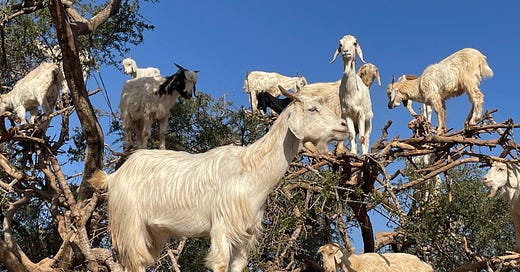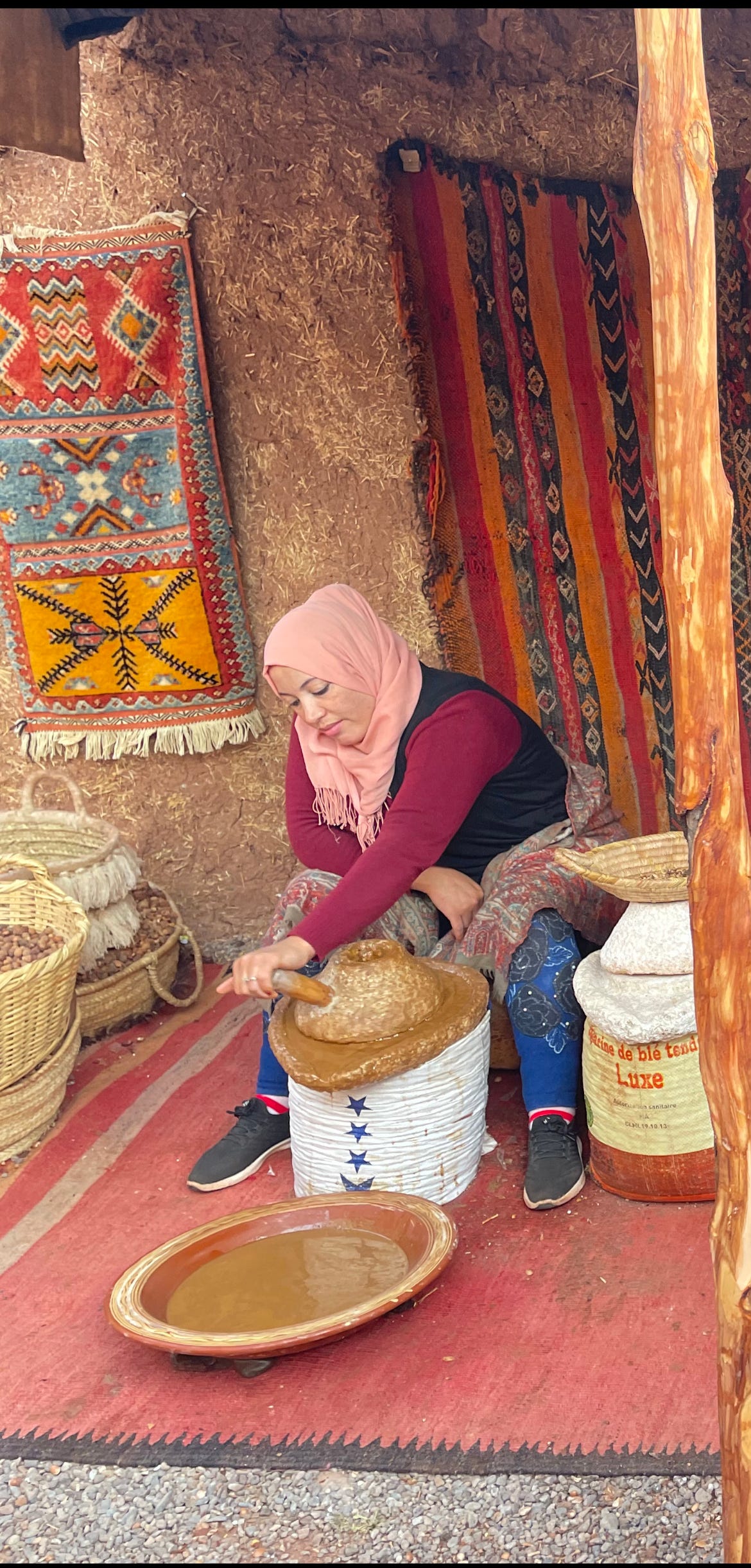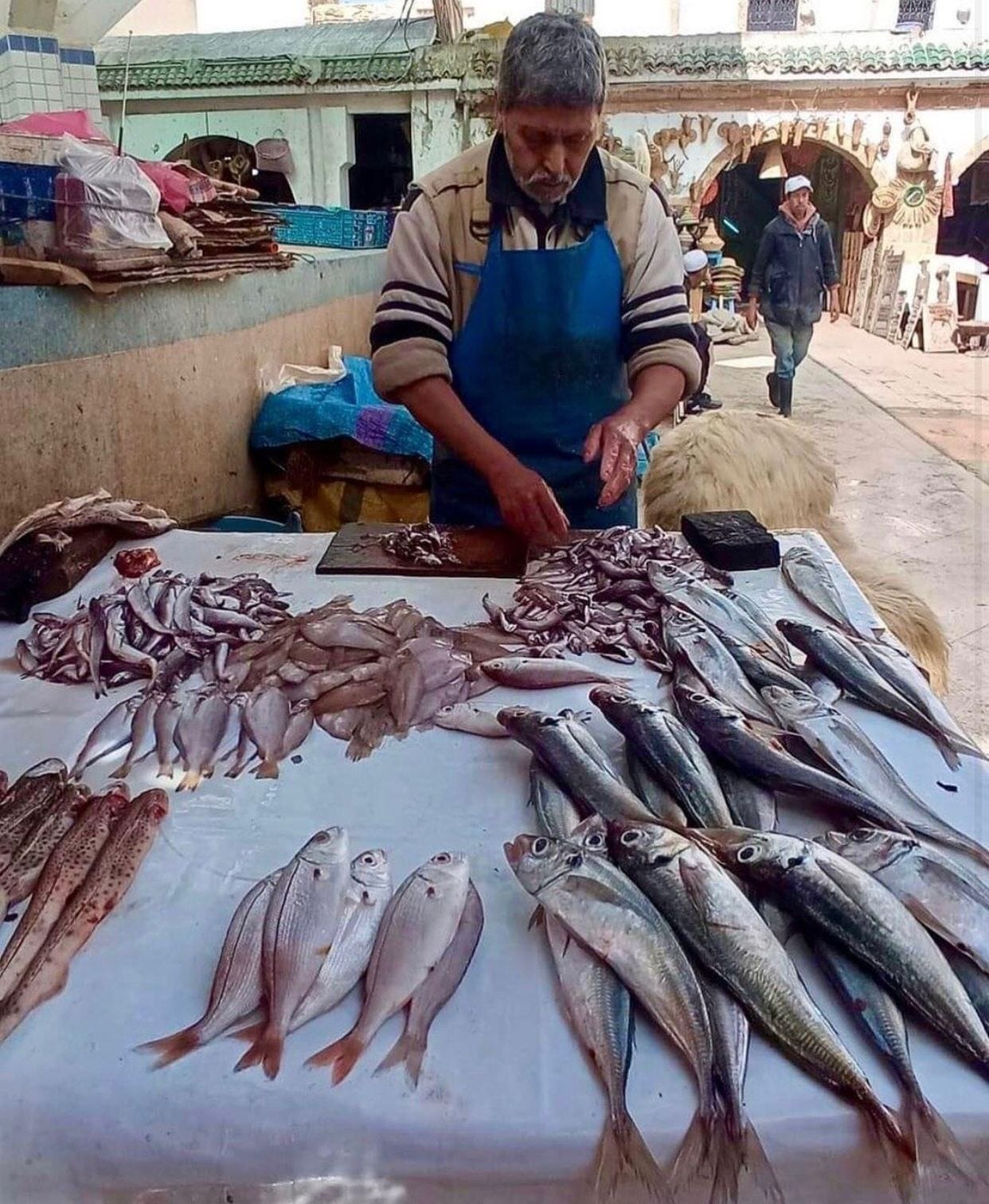Dear friends,
I know, this scene goat me stumped too.
Eerie tree ornaments? Nah. Freshly laundered clothes aired out in the hot sun? They were downside up—gravity defying, so can’t be.
Perceptions played party in my head when I first spotted ghostly white apparitions on trees from my distant vantage point. I was in a tourist van, driving along the dusty desert roads outside of Marrakech in Southern Morocco, on my way to the stunning fishing village of Essaouira.
A few minutes later, as our driver approached this outer worldly scene, we realized that the apparitions were none other than cute goats! Acrobatic and elegant in their poise, most were staring into yonder, with the air of a romantic poet of the 19th century—lost in thought, composing an ode perhaps. Their stoic stillness would have done Marcus Aurelius proud.
Goats perched on an argan tree are a common sight in Southwestern Morocco, the leading producer and exporter of the rare and coveted argan oil.
Goats: An essential reality to argan farmers
While this curious scene defies logic for most of us, agile goats perched on the argan tree or Argania spinosa, its scientific name, are a matter of daily subsistence for rural farmers scattered along the 100-mile dusty road from Marrakech to the coastal town of Essaouira.
The goat-argan tree-farmer trio reality is poignant and tugs at your heart. El Hussain, a local goatherd and fisherman from nearby Skala, explains, “I take my only child Khaled and my 17 goats on a 5km walk daily from home to the let them climb argan trees and eat all they want.”
You see, the goats are part of a complex ecosystem of argan oil production, the luxury beauty product we all know of, and that this region of the world is famous for. Farmers like El Hussain let goats loose on the argan tree—a species native to the arid and semi-arid areas of the sub-Saharan region of Morocco—and the agile animals prance up the trees and eat the sweet pulp-rich argan fruit (see picture below). They then defecate clumps of seed that farmers sell to local cooperatives who in turn press and purify them into the argan oil sold in the beauty industry, apart from being used as a culinary staple in Morocco. Argan oil is also known to prevent chronic illnesses, including heart disease, diabetes, and cancer.
The argan fruit is pulpy and goats love feeding on it to leave behind the kernels that are then processed to make argan oil.
Staff at a local argan oil facility show us the prized kernels that are transformed into liquid gold, the prized argan oil.
Yes, the prized oil that nourishes our tresses and, in some instances, dresses our salads, is likely to have its origin in goat poop. Roughly 30% of argan oil in Morocco is made with the help of goats.
As the seeds pass through the goat’s intestine, they become softer and easier to open for the farmers, otherwise stuck with the tough job of cracking open the nut in addition to the laborious production of oil that we witnessed at some local women’s cooperatives like the one seen below. The opinion is mixed though. Some say the seed is too big—it’s the size of a Brazilian nut—to pass through the intestinal tract of the goat, so they land up regurgitating it and spitting it out, and the farmers later collect them for the cooperatives.
A worker at a local cooperative turning the argan seed into a thick paste before it’s separated out into argan oil.
Either way, the prized beauty product we pay upwards of $30-$50 a vial has a stinky and humble origin story. I admit I was baffled to associate my favorite travel staple—Moroccan oil dry shampoo that I just used that morning incidentally—to goat poop. That must make me a beauty scapegoat, I thought, amused.
We approached the tree goats and I stared at one in the eye, expecting it to fully tumble onto my head, but it held its position steadfastly like a world class gymnast on a balancing beam. I couldn’t resist—I willingly took a cutie from the arms of the goatherd and cuddled her for a few minutes. In return, we offered some compensation to the goatherds hanging out in the area.
Life is hard for the goat farmers
Modest compensations such as these are also an incentive for farmers like El Hussain to walk up the long road to the argan trees every day. The land is mostly barren in the winter months, and Morocco has suffered its most severe drought in decades during the years 2021-22, with temperatures approaching 50C and dry hot winds leading to decreasing output throughout all crops. Treeing goats therefore to make some quick bucks from tourists is commonplace to supplement family income. This practice has for obvious reasons attracted the wrath of animal rights activists and environmentalists who say that making goats stand on argan trees for a long time is bad for the animals and bad for the trees as well.
But El Hussain contends, “The goats are perfectly fine, and they climb themselves and they don’t really need us to put them up there. They love it up there and they feel they are free.” Unlike Hussain, who earns a living also as a fisherman, other families in the area rely on argan and olive tree farming as their main income source.
Apart from being a goat farmer, El Hussain, featured above, is a fisherman because he can no longer subsist on only aiding argan oil production with his goats. He sells his daily catch in the lovely blue coastal town of Essaouira.
This animal-human synergy certainly shatters conventional perceptions of subsistence, but who are we to judge the sheep from the goat?
Another goat, another continent. This one is taken on the hills of Melkote in Southern India. Mountain goats can hold their balance on precarious precipices! Compared to the Moroccan goat’s existence on short argan trees, this one seems to be living on the edge, literally.
Perception is reality
The experience of tree goats is certainly a mind bender—visually and metaphysically. We are talking cute, poop, beauty, subsistence, and animal rights in the same breath. The picture of the tree goat may be adorable to some and to others, it might really get their goat! Each to his/her/their own. At the end of the day, our perception of the world is our reality. As for the stinky mess turning into an elixir for our hair, that’s the cosmos of life itself—imperfectly perfect in its essence. Now don’t let that reality get your goat!
“Come visit us,” says El Hussain. “The goats—it’s culture for us, it’s the image of our beloved country…we want to show the uniqueness of our country—that’s the ultimate goal.”
What do you think of this goat reality? What is this the strangest thing you have seen while on your travels? Do share in the comments box below.
Meaningfully yours,
Anu
PS: I’d like to thank goatherd El Hussain and his son Khaled for their interviews, and for tour guide Youness Ali for being the English-Arabic translator and facilitator of the interview.












Fascinating story! Thank you for sharing your experience and happiness of the world!
You express it beautifully. Looking forward to read more….
Such a fun and educational read Anu!